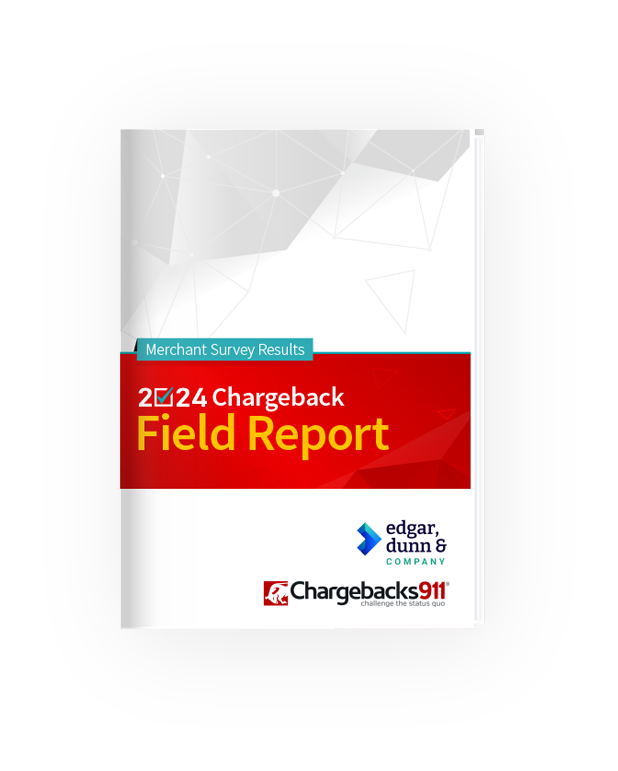What Makes an Electronic Funds Transfer (EFT) Different From a Typical Credit Purchase?
You’ve probably been using electronic funds transfers, or EFTs, to send and receive payments for a long time now. If you need to move money fast, an EFT is one of the easiest and safest methods to make it happen.
Cool. But, that raises the question: “what exactly counts as an EFT?”
Also, despite the fact that they’re considered a more reliable payment method, are EFTs really as safe as banks and payment processors would have you believe? Do consumers and merchants enjoy the same benefits of EFT transactions?
In today’s post, we’ll tackle these and many other questions you might have about electronic funds transfers to try and clear up some of the confusion surrounding this payment method.
Recommended reading
- What is EMV Bypass Cloning? Are Chip Cards Still Secure?
- Dispute Apple Pay Transaction: How Does The Process Work?
- Terminal ID Number (TID): What is it? What Does it Do?
- How EMV Chip Cards Work: Pros, Cons, Data Points & More
- The AI Gap: Banks’ Slow Adoption Creates Chances for Fraud
- Point of Sale Systems: How to Get More From Your POS Machine
What is an Electronic Funds Transfer?
- Electronic Funds Transfer
An electronic funds transfer (EFT) is any exchange which involves the ordering, instructing, or authorizing of a financial institution to debit or credit a consumer's account via an electronic terminal, telephone, computer, or magnetic tape. The transmission of money in an EFT is a digital transaction, meaning there is no need for a paper document to verify the information.
[noun]/ə • lek • trän • ik • fənd • trans • fər/
The Electronic Fund Transfer Act of 1978 defines EFTs as any transfer initiated by telephone, computer, electronic terminal, or magnetic tape. That can be an e-check, a direct deposit, a bank transfer, or a peer-to-peer (P2P) payment.
Electronic funds transfers have effectively the need for paper checks. They’re faster, simpler to use, and more accessible. They’re also a more direct form of payment, and offer additional security features not offered by traditional payment checks.
The White House issued an executive order in March 2025 calling on the federal government to cease using paper checks in almost all circumstances.
How Do EFTs Work?
The electronic funds transfer process is pretty straightforward. They involve two primary parties: the sender and the receiver of the funds being transferred.
When a sender initiates a funds transfer, the request will be channeled through a series of digital networks. These may originate from a physical terminal (like an ATM machine) or through the internet, with the receiver’s bank account being the final destination.
Networks Used to Process Electronic Funds Transfers
Different EFT networks, including CHIPS, FedWire, and SWIFT, are used to process trillions of dollars in payments each day.
It’s hard to grasp the sheer volume of money exchanged through EFTs every day. But, I can give you a couple of real-world examples that might help.
First, there’s the CHIPS network, or the Clearing House Interbank Payments System. Described as the “largest private sector USD clearing and settlement system in the world,” CHIPS settles roughly half a million large-dollar transactions worth a combined $1.8 trillion per day.
FedWire is another example. This is a real-time gross settlement (RTGS) fund transfer system developed and maintained by the US Federal Reserve System, settling $4.2 trillion worth of transactions per day.
Finally, there’s the cross-border Society for Worldwide Interbank Financial Telecommunications (SWIFT) network. This EFT network handles nearly 45 million daily transactions worth roughly $7.5 trillion.
Total daily volume of electronic funds transfers (in USD)
Together, these and other EFT networks help consumers and businesses send wires, pay credit card bills, and initiate peer-to-peer payments, as we’ll see in the next section.
Though the acronyms are similar, an EFT is not the same as an ETF, or “exchange-traded fund.” The latter is a financial product; a type of pooled investment security that operates like a mutual fund, tracking a particular index, commodity, or other asset.
Examples of Electronic Funds Transfers
Recurring transactions, tax payments, loan disbursements, payroll deposits, online shopping, and peer-to-peer transfers all involve EFTs. Here are some common ways EFTs are used:
Senders and receivers can be individuals, employers, banks, utility companies, or merchants. Most EFT payments clear (finish processing) within a couple of days, and can even clear same-day, depending on the payment processor or bank.
EFTs, Direct Debits & the ACH Network
Direct debits are a type of ACH transaction, which are a type of EFT.
Direct debit withdrawals involve one financial institution or individual withdrawing funds from another person’s bank account. I bring this up as a way to talk a bit about the distinction between EFTs and ACH payments.
This can get a little confusing, but bear with me. In the United States, direct debits are processed through the Automated Clearing House (ACH) network. And, in effect, all ACH payments are EFT payments... but not all EFT payments are ACH payments.
The ACH network is used for card-present and card-not-present credit and debit transactions. It’s also used for direct payments like payroll deposits or recurring billing like utilities or rental payments. These payments are processed in batches daily, but can take up to four business days to complete. This is because of redundancies in the process that are meant to ensure correct reconciliation, but which also slow down finalization of transactions.
Some EFT payments, in contrast, occur in real-time. Payments can be initiated, processed, and finalized on the same day or by the following business day, depending on the payment processor and financial institution. Thus, some EFT payments that are not conducted via the ACH network can be faster than ACH payments or bank transfers.
Advantages & Disadvantages of Electronic Funds Transfers
Thanks to their speed, security, scalability, and convenience, EFTs have become a core staple in the modern-day payments ecosystem.
Nearly 90% of consumers today say they use digital payments, and even many in-person transactions involve EFTs of some sort. That said, there are some drawbacks to EFTs that merchants and consumers should be aware of, just for the sake of being fully informed.
I present several advantages and disadvantages below:
| Factor | Advantages | Disadvantages |
| Speed | Some EFTs, like domestic wire transfers and P2P payments, feature instantaneous transfers. | Some EFTs, such as ACH transfers, international wires, and credit card payments, can take between one to three business days to settle. |
| Cost | EFTs methods like ACH payments or debit card payments, are free or low-cost. | Some EFTs, like international wires, can cost between $40 and $100. Credit card interchange fees can likewise range between 1% and 3% of the transaction value. |
| Security | Continued improvements in fraud prevention technology like 3-D Secure, tokenization, biometrics, and dynamic CVVs are making card-based EFTs more secure than ever before. | EFTs are not completely immune from fraud tactics like phishing, account takeover fraud, or identity theft. Some EFTs, like ACH payments and wires, are irreversible, which makes funds difficult to recover in instances of error or fraud. |
| Accessibility | Can be used to pay domestically or internationally, as long as one has cellular service or access to the internet. | Reliance on technology and the internet means a system outage or connectivity issue can result in delayed transaction processing. |
| Disputes | The Electronic Fund Transfer Act of 1978 caps consumers’ liability for fraud or unauthorized activity to $50 if a dispute is filed within two days of the transaction. Many issuers take this a step further and provide cardholders with $0 fraud liability guarantees. | Cardholders may abuse their chargeback protections, resulting in high administrative costs for merchants, penalties for excessive chargebacks, and fraud losses. |
About that last bit...
Remember, the Electronic Fund Transfer Act guarantees consumers the right to dispute incorrect financial statements. This also plays a role in outlining how to approach and resolve disputes known as chargebacks.
For banks and consumers, the rules and procedures for filing a debit card chargeback differ from those used with credit card disputes. As a merchant, however, you’ll find the end result is essentially the same. In both cases, the transaction amount and any associated fees get forcibly taken from your account. You’ll also lose the purchased merchandise, and any shipping or stocking costs.
Each card network has its own regulations and protocols. These can change at any time. Chargeback reason codes, for instance, differ from one card brand to another. Many are similar, but there are variations in terminology, verbiage, and definitions that can impact chargeback rules and processes.
Are you a merchant concerned about the number of chargebacks you’re seeing? You may need expert help to get this problem under control. Call Chargebacks911® today for a free ROI analysis.
FAQs
What is the difference between an EFT and an ACH?
Electronic Fund Transfer (EFT) is a broad term used to describe the process of transferring money electronically. An automated clearing house (ACH) payment, meanwhile, is a specific type of EFT that involves the transfer of funds between banks.
What are the four most common types of electronic fund transfer?
The four most common types of electronic fund transfers are bank transfers (i.e. ACH transfers), peer-to-peer payments, wire transfers, and electronic checks.
Is direct debit an EFT?
Yes. Direct debit withdrawals involve one financial institution or individual withdrawing funds from another person’s bank account. This transaction includes the person or institution withdrawing funds (the payee) who either directly debits the funds or requests the funds be removed from someone else’s (the payer’s) account. Said funds will then be deposited into an account designated by the payee.
How long does an EFT transfer take?
Most EFT payments clear (finish processing) within a couple of days. Some may even clear one the same day, depending on the payment processor or bank.
Is EFT the same as bank transfer?
No, an EFT is not the same as a bank transfer.
“EFT” is an umbrella name that refers to the electronic payments, while a bank transfer specifically refers to the movement of money from one bank account to another.
Is Zelle considered electronic funds transfer?
Yes, Zelle is an example of a peer-to-peer (P2P) electronic fund transfer service.
Why use ACH instead of wire transfer?
ACH transactions are preferable to wire transfers because the former are less costly and may face fewer fraud risks than the latter.















